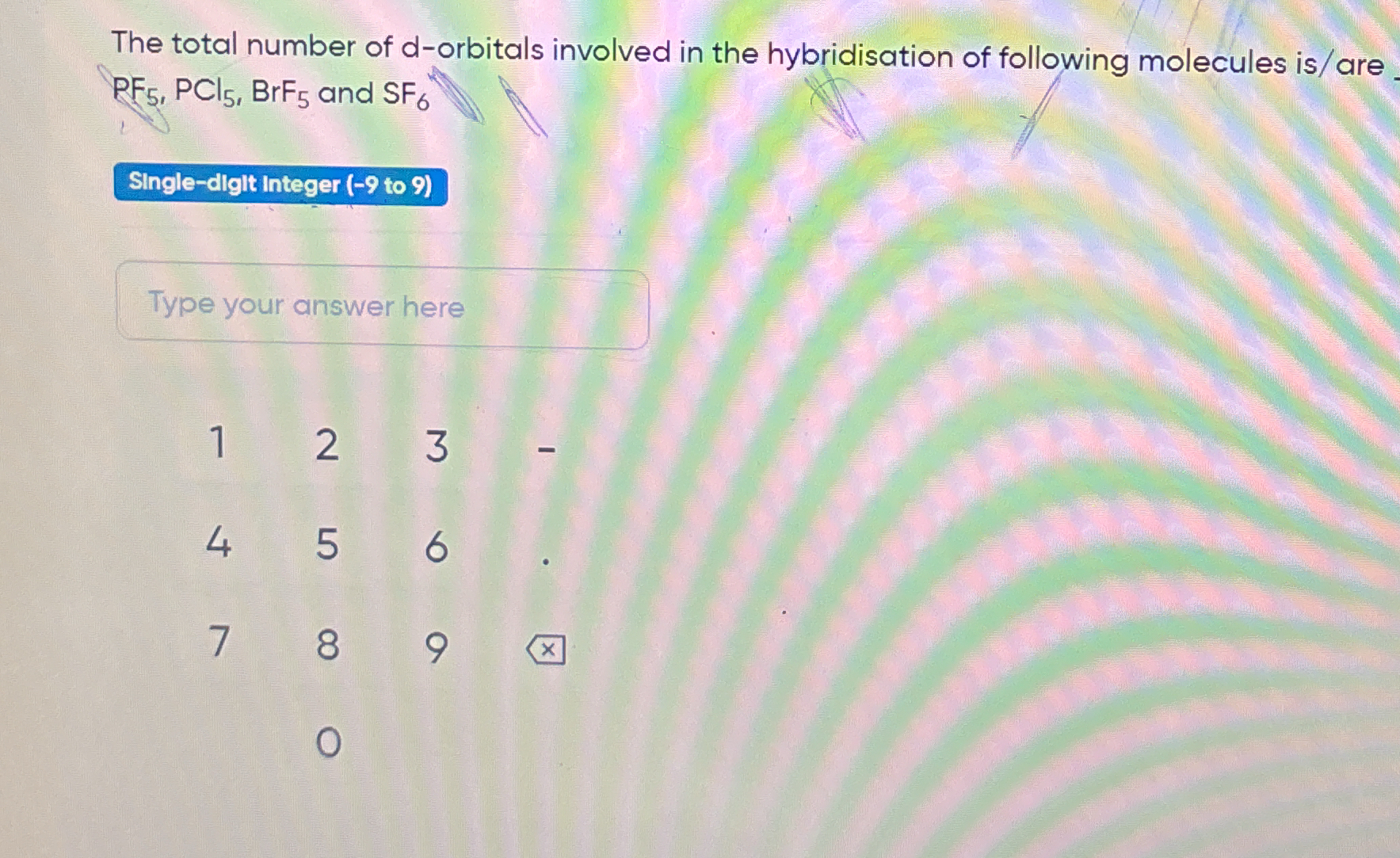The total number of d-orbitals involved in the hybridisation of following molecules is/are PF5, PCl5, BrF5 and SF6.

Understand the Problem
The question is asking for the total number of d-orbitals involved in the hybridization of the specified molecules (PF5, PCl5, BrF5, and SF6). To answer this, we need to understand the hybridization states of these compounds and determine how many d-orbitals are used in each.
Answer
6
Answer for screen readers
The total number of d-orbitals involved in the hybridization of PF(_5), PCl(_5), BrF(_5), and SF(_6) is 6.
Steps to Solve
- Identify the hybridization state of each molecule
For PF(_5), PCl(_5), BrF(_5), and SF(_6), we first determine their hybridization states.
- PF(_5): Phosphorus (P) hybridizes to form sp(^3)d.
- PCl(_5): Similar to PF(_5), phosphorus hybridizes to form sp(^3)d.
- BrF(_5): Bromine (Br) hybridizes to form sp(^3)d(^2).
- SF(_6): Sulfur (S) hybridizes to form sp(^3)d(^2).
- Count the d-orbitals used in each hybridization
Next, we need to count the number of d-orbitals used in the hybridization of each molecule based on the hybridization types we identified:
- For PF(_5): 1 d-orbital
- For PCl(_5): 1 d-orbital
- For BrF(_5): 2 d-orbitals
- For SF(_6): 2 d-orbitals
- Sum the d-orbitals from each molecule
Now we can sum the d-orbitals used:
Total d-orbitals = (1 + 1 + 2 + 2)
- Calculate the total
Perform the final calculation to find the total number of d-orbitals used:
[ \text{Total d-orbitals} = 1 + 1 + 2 + 2 = 6 ]
The total number of d-orbitals involved in the hybridization of PF(_5), PCl(_5), BrF(_5), and SF(_6) is 6.
More Information
This result shows how many d-orbitals are utilized in the hybridization process of these specific molecules, which involves understanding the central atom's available orbitals and their hybridization states.
Tips
- Confusing the hybridization states of the molecules, particularly for those like SF(_6) and BrF(_5), which involve more complex d-orbital participation.
- Failing to account for multiple d-orbitals in certain hybridizations.
AI-generated content may contain errors. Please verify critical information